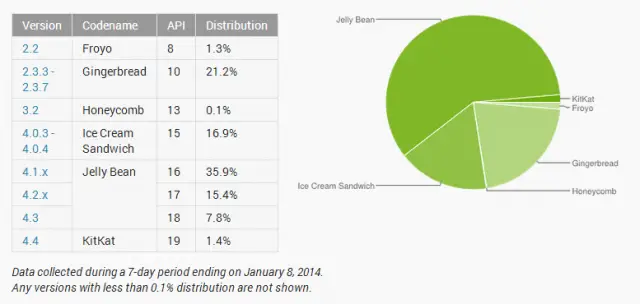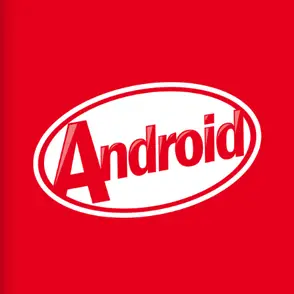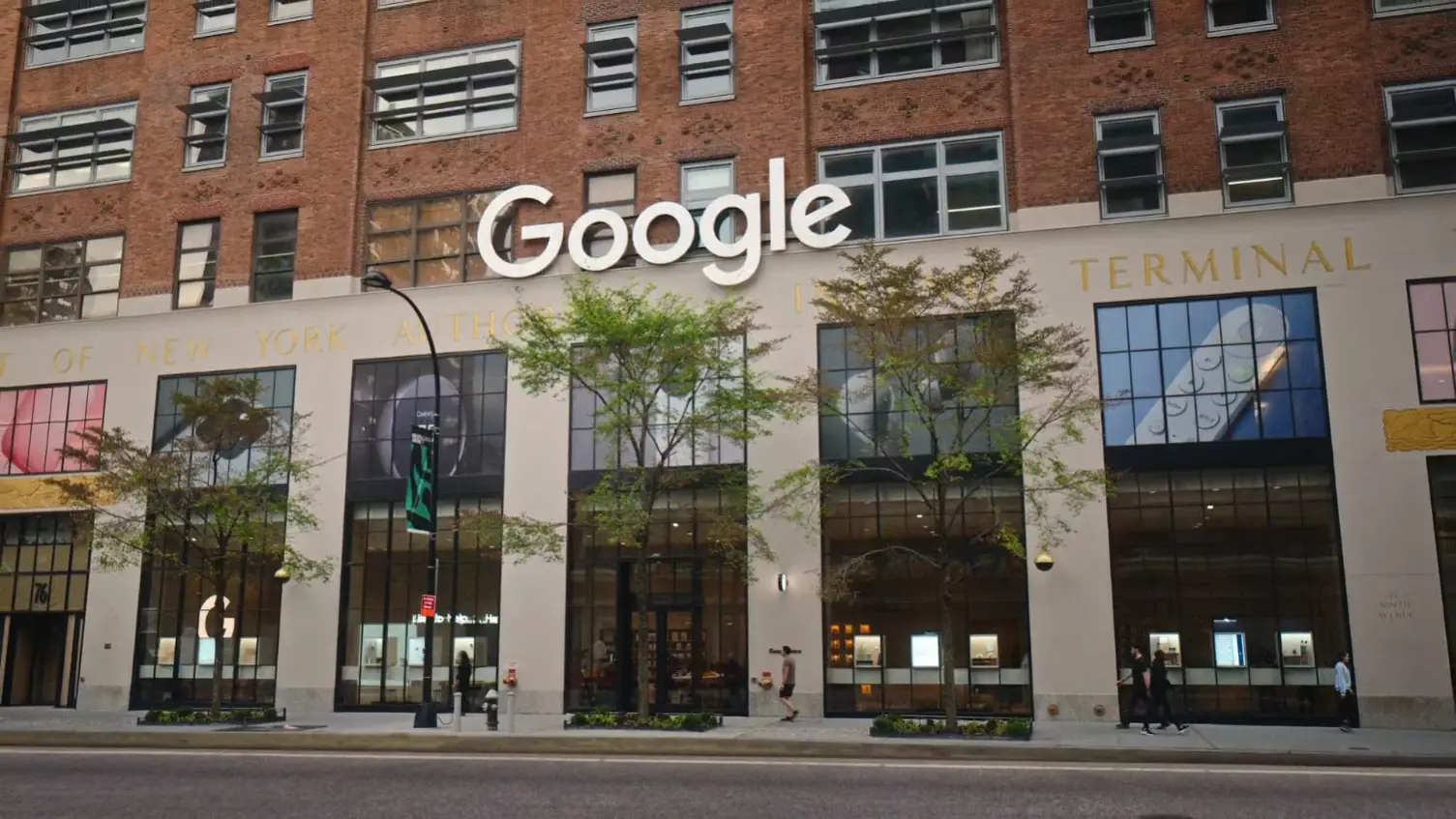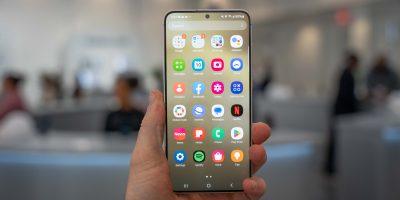Ready for yet another update to Google’s Android platform distribution numbers? The software and web technology released the share of operating systems for the week-long period ending January 8th, 2014, and the trends don’t sow anything terribly surprising. Jelly Bean and KitKat are on the rise, for starters.
The former — consisting of all versions from Android 4.1 through Android 4.3 — makes up a combined 59.1% of the pie, which is about a 3% increase from the last update. It’s likely that this number has increased due to a surge in sales of devices that come with Jelly Bean pre-installed, as well as a small number of straggling devices that had yet to be upgraded from Ice Cream Sandwich.
Speaking of Ice Cream Sandwich, that OS still has a pretty solid choke hold as it accounts for 16.9% of all devices. Gingerbread is also a dominant force at 21.2%. The good news is that these numbers are down 4-5% from the last update, but it’s going to take a lot more work, time and smartphone upgrades before we begin to see them fade away.
Android 4.4 KitKat still only commands 1.4%, though it’s only been a solid couple of months since its debut on the Nexus 5. Motorola is helping this number along with timely upgrades to the Motorola Moto X and their Verizon DROID phones, though we likely won’t see significant progress until the likes of LG, Samsung, Sony and HTC start upgrading all their major phones to the latest version of Android.
There was once a point in time where having the latest versions of Android was a necessity for getting access to the latest features, but Google has been working to decouple as much as they can from the core of Android. Many features come to us in the form of applications that can be upgrade independently of the base OS, so getting an upgrade with new features is as simple as downloading a few megabytes worth of updates.
While not all of Android’s features can be distributed and upgraded in this manner, such as the transparency framework or full-screen mode in Android 4.4 KitKat, it certainly helps users’ phones stay fresh and allows them to enjoy new features over time.
Google’s also seemingly holding on to each major version of Android longer, with Jelly Bean seeing a long string of minor upgrades before we were finally able to unwrap our KitKat bars. That said, let’s hope it won’t take terribly long for KitKat to eventually become the leading version of Android. Hit the source link for the full breakdown of numbers.
[via Android Developers]













And Gingdrbread continues to stand strong.
I’m one of those people that still has a Froyo/Gingerbread device. My dad still uses my old GS1 and he doesn’t need anymore than that, device still works great!
apps that don’t support your phone and poor battery life. I’m sure if you or your father got new devices that had better battery life and performed much better you wouldn’t want to go back. The old Froyo/Gingerbread devices were very clunky and unreliable compared with newer jellybean devices.
I’m using a Nexus 5 so I always have the latest and greatest. For what he needs it works just fine. When I make the move to the new Nexus or LG/HTC gpe device I’ll give him my 5 and we’ll be keeping the S1 as a back up phone.
As much as I hated the S1 it’s worked for him and it still works well believe it or not. It’s lived longer than my old HTC Amaze 4G and my sister’s Sidekick 4G. Now those were long in the tooth.
Blah… still can’t believe that Google dropped the GNex support with KitKat. Running CM now, and it is faster with better battery life than stock JB.